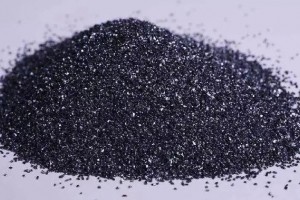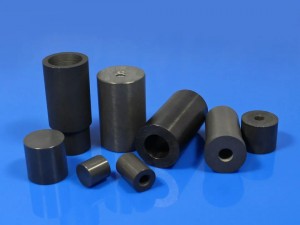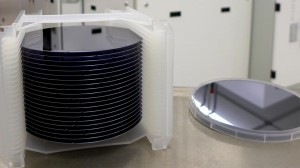Silicon carbide (SiC) is a remarkable compound that can be found in both the semiconductor industry and advanced ceramic products. This often leads to confusion among laypeople who may mistake them as the same type of product. In reality, while sharing identical chemical composition, SiC manifests as either wear-resistant advanced ceramics or high-efficiency semiconductors, playing completely different roles in industrial applications. Significant differences exist between ceramic-grade and semiconductor-grade SiC materials in terms of crystal structure, manufacturing processes, performance characteristics, and application fields.
- Divergent Purity Requirements for Raw Materials
Ceramic-grade SiC has relatively lenient purity requirements for its powder feedstock. Typically, commercial-grade products with 90%-98% purity can meet most application needs, though high-performance structural ceramics may require 98%-99.5% purity (e.g., reaction-bonded SiC requires controlled free silicon content). It tolerates certain impurities and sometimes intentionally incorporates sintering aids like aluminum oxide (Al₂O₃) or yttrium oxide (Y₂O₃) to improve sintering performance, lower sintering temperatures, and enhance final product density.
Semiconductor-grade SiC demands near-perfect purity levels. Substrate-grade single crystal SiC requires ≥99.9999% (6N) purity, with some high-end applications needing 7N (99.99999%) purity. Epitaxial layers must maintain impurity concentrations below 10¹⁶ atoms/cm³ (particularly avoiding deep-level impurities like B, Al, and V). Even trace impurities such as iron (Fe), aluminum (Al), or boron (B) can severely impact electrical properties by causing carrier scattering, reducing breakdown field strength, and ultimately compromising device performance and reliability, necessitating strict impurity control.
Silicon carbide semiconductor material
- Distinct Crystal Structures and Quality
Ceramic-grade SiC primarily exists as polycrystalline powder or sintered bodies composed of numerous randomly oriented SiC microcrystals. The material may contain multiple polytypes (e.g., α-SiC, β-SiC) without strict control over specific polytypes, with emphasis instead on overall material density and uniformity. Its internal structure features abundant grain boundaries and microscopic pores, and may contain sintering aids (e.g., Al₂O₃, Y₂O₃).
Semiconductor-grade SiC must be single-crystal substrates or epitaxial layers with highly ordered crystal structures. It requires specific polytypes obtained through precision crystal growth techniques (e.g., 4H-SiC, 6H-SiC). Electrical properties like electron mobility and bandgap are extremely sensitive to polytype selection, necessitating strict control. Currently, 4H-SiC dominates the market due to its superior electrical properties including high carrier mobility and breakdown field strength, making it ideal for power devices.
- Process Complexity Comparison
Ceramic-grade SiC employs relatively simple manufacturing processes (powder preparation → forming → sintering), analogous to “brick-making.” The process involves:
- Mixing commercial-grade SiC powder (typically micron-sized) with binders
- Forming via pressing
- High-temperature sintering (1600-2200°C) to achieve densification through particle diffusion
Most applications can be satisfied with >90% density. The entire process doesn’t require precise crystal growth control, focusing instead on forming and sintering consistency. Advantages include process flexibility for complex shapes, though with relatively lower purity requirements.
Semiconductor-grade SiC involves far more complex processes (high-purity powder preparation → single-crystal substrate growth → epitaxial wafer deposition → device fabrication). Key steps include:
- Substrate preparation primarily via physical vapor transport (PVT) method
- Sublimation of SiC powder at extreme conditions (2200-2400°C, high vacuum)
- Precise control of temperature gradients (±1°C) and pressure parameters
- Epitaxial layer growth via chemical vapor deposition (CVD) to create uniformly thick, doped layers (typically several to tens of microns)
The entire process requires ultra-clean environments (e.g., Class 10 cleanrooms) to prevent contamination. Characteristics include extreme process precision, requiring control over thermal fields and gas flow rates, with stringent requirements for both raw material purity (>99.9999%) and equipment sophistication.
- Significant Cost Differences and Market Orientations
Ceramic-grade SiC features:
- Raw material: Commercial-grade powder
- Relatively simple processes
- Low cost: Thousands to tens of thousands RMB per ton
- Broad applications: Abrasives, refractories, and other cost-sensitive industries
Semiconductor-grade SiC features:
- Long substrate growth cycles
- Challenging defect control
- Low yield rates
- High cost: Thousands of USD per 6-inch substrate
- Focused markets: High-performance electronics like power devices and RF components
With rapid development of new energy vehicles and 5G communications, market demand is growing exponentially.
- Differentiated Application Scenarios
Ceramic-grade SiC serves as the “industrial workhorse” primarily for structural applications. Leveraging its excellent mechanical properties (high hardness, wear resistance) and thermal properties (high temperature resistance, oxidation resistance), it excels in:
- Abrasives (grinding wheels, sandpaper)
- Refractories (high-temperature kiln linings)
- Wear/corrosion-resistant components (pump bodies, pipe linings)
Silicon carbide ceramic structural components
Semiconductor-grade SiC performs as the “electronic elite,” utilizing its wide bandgap semiconductor properties to demonstrate unique advantages in electronic devices:
- Power devices: EV inverters, grid converters (improving power conversion efficiency)
- RF devices: 5G base stations, radar systems (enabling higher operating frequencies)
- Optoelectronics: Substrate material for blue LEDs
200-millimeter SiC epitaxial wafer
|
Dimension |
Ceramic-grade SiC |
Semiconductor-grade SiC |
|
Crystal Structure |
Polycrystalline, multiple polytypes |
Single crystal, strictly selected polytypes |
|
Process Focus |
Densification and shape control |
Crystal quality and electrical property control |
|
Performance Priority |
Mechanical strength, corrosion resistance, thermal stability |
Electrical properties (bandgap, breakdown field, etc.) |
|
Application Scenarios |
Structural components, wear-resistant parts, high-temperature components |
High-power devices, high-frequency devices, optoelectronic devices |
|
Cost Drivers |
Process flexibility, raw material cost |
Crystal growth rate, equipment precision, raw material purity |
In summary, the fundamental difference stems from their distinct functional purposes: ceramic-grade SiC utilizes “form (structure)” while semiconductor-grade SiC utilizes “properties (electrical).” The former pursues cost-effective mechanical/thermal performance, while the latter represents the pinnacle of material preparation technology as high-purity, single-crystal functional material. Though sharing the same chemical origin, ceramic-grade and semiconductor-grade SiC exhibit clear differences in purity, crystal structure, and manufacturing processes – yet both make significant contributions to industrial production and technological advancement in their respective domains.
XKH is a high-tech enterprise specializing in the R&D and production of silicon carbide (SiC) materials, offering customized development, precision machining, and surface treatment services ranging from high-purity SiC ceramics to semiconductor-grade SiC crystals. Leveraging advanced preparation technologies and intelligent production lines, XKH provides tunable-performance (90%-7N purity) and structure-controlled (polycrystalline/single-crystalline) SiC products and solutions for clients in semiconductor, new energy, aerospace and other cutting-edge fields. Our products find extensive applications in semiconductor equipment, electric vehicles, 5G communications and related industries.
The following are silicon carbide ceramic devices produced by XKH.
Post time: Jul-30-2025



